Podcast: Play in new window | Download
What is permaculture? – Show Notes
I love permaculture.
But what is it? Today we cover what permaculture is and how it has the potential to change your worldview and life. Permaculture is a design concept has certainly changed my entire worldview and impacts everything I do. 100 episodes in, time to talk about permaculture!
Bam.
Listen at your own risk. You might get addicted.
Today’s links: ely.how/episode101
- Gaia’s Garden by Toby Hemenway
- The Suburban Micro Farm by Amy Stross
- How permaculture could save California
- Tenth Acre Farm website
What is permaculture and why does it matter to you?
- Permaculture is a philosophy of working with, rather than against nature; of protracted and thoughtful observation rather than protracted and thoughtless labor; and of looking at plants and animals in all their functions, rather than treating any area as a single product system.”
- Design perspective inspired by nature using purposeful interventions to create resilient systems that require minimal long-term inputs for maximum sufficiency and yield
- Permaculture systems are designed to work along with land, ecosystems, and soil
- Permaculture is more a mindset and design perspective rather than a set of prescribed tools or processes
- Sets of principles and founding paradigms outline permaculture design
-
- Prime Directive
- “The only ethical decision is to take responsibility for our own existence and that of our children” – Bill Mollison
- Prime Directive
-
- Ethics of Permaculture
- Care of Earth
- Care of People
- Return of Surplus
- Ethics of Permaculture
- The Ethics serve to
- Maintain system integrity
- Build resilience
- Build connectedness
- Principles of Permaculture – Toby Hemenway
- Functional Design Principles
- Observe
- Connect
- Catch and store energy and materials
- Each element performs multiple functions
- Each function is supported by multiple elements
- Make the least change for the greatest effect
- Use small scale, intensive systems
- Functional Design Principles
-
- Living and Energy System Principles
- Optimize edge
- Collaborate with succession
- Use biological and renewable resources
- Living and Energy System Principles
-
- Attitudes
-
-
- Turn problems into solutions
- Get a yield
- The biggest limit to abundance is creativity
- Mistakes are tools for learning
-
- The Principles serve to
- Guide the design process
- Provide general ways to think creatively and design purposefully and appropriately
What is Permaculture-ELY 101
00:00:00 – 00:05:04
What’s up I’m Ben Hale and this is the easy living yards podcast? Creating Beautiful Yard should be easy. Let’s jump in in create the Dream Yard. You deserve so you can enjoy more time doing what you love Welcome to episode one hundred and one of the easy living yards podcast on cast guys before we jump into day to today’s topic. which is what is permaculture? Why should we care before we jump into that? Just go quick quick housekeeping thing. I just wanted to give you guys a heads up That over the month of January maybe February as well Shows might be coming out a little bit slower lower than normal. I’m Kinda taking things a little slower Kind of did that. In December as well did some recap shows Did some throwback shows and through January in February life has gotten crazy busy for myself with the household and kind of as I talk about here on the show you know. Life is more important than our yard work right right so in that same thread You know have to make some priorities right now just for the sake of my own energy so I hope you guys don’t mind but the shows will be coming out a little a little bit less frequently over the next couple of weeks or so so I just wanted to give you a heads up so it’s not taking by surprise if you’re wondering there’s something wrong with the show or anything and likewise with the family. Nothing’s wrong basically. I just took on took on more than I can chew with some house projects and that sort of thing work is kind of crazy as well so life. Life is kind of crazy We’re still not still not sleeping through the night with our little guys We’ve had some sicknesses. Go through the family. That’s been keeping even some kid who is up as well as our young Guy He’s still not sleeping through the night so we’re quite tired on top of that too We decided to tackle a bathroom remodel. Our math master bathroom desperately needed some remodeling and so we ripped it down basically to the studs To Redo it and it’s of course quite a bit of work to do so and of course like any project we’ve run into a couple speed bumps that sort of thing nothing nothing. We can’t tackle but it is taking longer than expected much of my free time as well so You know I just have to make some priority calls here so unfortunately guys the show is going to slow down for a little bit Luckily though this is a little bit of a quieter season and that’s not to say that this show is not important to me. The show is very important to me. I hope it is important to you as well. And so We’ll be getting back up to speed very soon but I wanted to just let you know that You know I will. Beginning shows up maybe every other week for the next two weeks or few weeks or so and Yeah wanted to give you a heads up there so I’m super excited though. Talk about today’s topic. which is what is permaculture? And why should we care. So if you guys don’t know I haven’t really talked about a whole on the show but I am very passionate about this thing called permaculture. Maybe you’ve heard of it. Maybe you haven’t maybe already have some conceptions of it. It’s actually kind of a polarizing word for some people blue heard it I’ll be flat. Honest I love permaculture permaculture. Well a lot of people have different definitions of it. A lot of people who haven’t haven’t really dove deep into the subject. Also have these sometimes misconceptions about it to essentially what permaculture is again the definition intimate but as a whole this is kind of this. The synthesis of it is this design. Concept is designed process or design sciences. What some people call it As a way of perceiving things specifically with the focus of food production is kind of where it originated but it’s a mindset a design process that really encompasses everything. It’s so it’s a way to look at things to minimize inputs and maximize yield in a way that takes care of the world around us. Takes Care of ourselves to that so it’s really been applied now to not only agriculture Home setting but also community design fine community resilience business design. That’s actually where a lot of what I’ve designed my business around this concept of permaculture as well so I’ve tried to design signed my business in a way that applies permaculture concepts to my business so kind of funky there right so let’s get into what it is and really. This is going to be kind of a two part series today. I’m GonNa Talk to you mostly about defining this concept what is permaculture rate. And why why should you even care. Why should you keep at this episode going? And why shouldn’t you just turn it off. So I really want to get to the synthesis of what it is and how it can help us and then in next episode road. I’ll go more deeply into really why it matters to you.
00:05:04 – 00:10:07
And how you can apply it to your life into your landscape more specifically and and how this this permaculture concept can really change your life in a way of how you approach things and how you approach your yard your life. That sort of thing sounds kind of lofty so I wanNA make it more granular in next episode this episode we will be a little bit in the loft definition stuff but of course I don’t WanNa make it boring at the same time so I try and make it as interesting as possible possible. Provide you some examples that sort of thing and Let’s just dive right in so this concept of permaculture just really really short history is is is a there’s two founders of the permaculture movement this dude named Bill Mollison and his dude named David Home Grin there to Australian guys they worked together at a the university and basically they started to come across all these. The local indigenous aborigine populations some of the tactics they use to address the climate that they lived in To address you know resilience and that sort of thing and all these other resilient agricultural tro design concepts and processes and tools that were being used across various geographies across the world. They started to pull that together into this. This more more synthesized concept which they called permaculture abbreviation of two two different terms permanent culture an permanent agriculture so the first application of course was this permanent agriculture thing so a more resilient agriculture design but it quickly became realized that it was more broadly applied. If you have if you WANNA have permanent permanent agriculture systems you have to have permanent cultural systems as well and so it came to be more more applied to this just general overview of how to live basically in a more resilient way that addresses some of the major questions of our our day this was back in the nineteen seventies and it’s certainly true today in the the twenty twenties right and of shortening Availability ability of resources or a restricted availability of resources whether it be water oil Food all sorts of things minerals right. It’s how do we address those those massive questions on a global scale but also apply it to be more resilient at a community in personal skills while so that’s kind of the history of it so they came up with these this kind of overlap laying concepts And basically just published it to the world and and it became this kind of growing growing movement across the world so now there’s kernels of permaculture practice communities across the world in almost Burma every geography with actual practical applicable systems growing food or resilience in pretty much any climate. You can imagine so it’s pretty cool stuff And so so it’s really really like that’s kind of why it’s hard to define actually because it’s this all encompassing processor concept with a bunch of different tools in applications just depending on your geography or climate conditions and that sort of thing or what you’re using it for whether it’s agriculture on a large scale or home setting or community designed developed develop a resilient community or business designed to develop a resilient business. All of those things take different tools and tactics but they have the same general mindset if if that makes sense okay so in my own words. Well let’s let’s talk about the founders words I I guess all right so so bill mollison one of the main you know the two founders He calls permaculture is such permaculture permaculture is a philosophy of working with rather than against nature of protracted and thoughtful observation rather than protracted in in thoughtless labor and of looking at plants and animals in all their functions rather than treating any area as a single product system. Okay that’s a mouthful fool so I’m just GonNa go through it again and then Kinda tease apart would in my own thoughts. What he’s trying to save? permaculture is a philosophy of working with rather than against nature of protracted and thoughtful observation rather than protracted and thoughtless labor and looking at plants and animals in all all their functions rather than treating any area as a single product system. So let’s take for example maybe instead of using my words I’ll just use an example so let’s take the example of the conventional lawn landscape since as what we talk about a lot on the show here right is is our landscapes right so if we think about our or yard the grassy lawn so protracted and thoughtless labor is basically this launch system. Right we have it’s really an artificial system usually compacted active soil with low fertility which grass does not like we want to grow grass there right so we we grow this grass.
00:10:07 – 00:15:03
We treat it with chemicals to make it Like with Weedon feed right so we want to get rid of the CRABGRASS. We want to get rid of the DANDELIONS and the clover we I mean most people I- I extract myself itself from this group of we So that’s generally the thought right is is to have just your one species of let’s say bluegrass or being Bermuda aggressor whatever so you cover it with Weeden feed you. Get rid of the plants. You don’t want you put crabgrass preventer on it right and then also you treat for grubs right you don’t want grubs grubbs eaten those routes so basically you have this really synthetic system. That’s highly has lots of inputs. And then of course. You have to irrigate right to keep it. Keep it watered watered when it’s dry and then you have to fertilize it. Because there’s low fertility in the soil and then you have to mow it right because you just put fertilizer on it so it’s growing faster and you just watered it so it’s growing growing faster rate but it’s not brown at least right so So that’s a protracted and thoughtless labor system right so permaculture says okay what what are the issues. What are the the high input pieces of this? And how can it may be different right. And so likewise looking at plants and animals in all their functions rather rather than treating any areas a single product system. So if you think about the lawn is a very specific single product system. You’re looking at one species of grass or maybe a blend of just a couple species species of grass. And you just want that you don’t look at it as a holistic process you look at those grubs as a pest right as opposed to maybe they’re eating again grubs are generally really eating the the The rotting or injured roots of the grass plants. That are struggling. Because they’re in a low fertility system. So maybe if you improved proved fertility the system. It would help you know reduce your inputs of fertilizers and GRUB preventer stuff because then the GRUBS wouldn’t be there is in high numbers numbers because the grass is healthier that will make sense. And then you wouldn’t have moles come to eat grubs for example and so seeing as a holistic system and and you know accepting thing that some of those those grubs are going to be there accepting that every once in a while you have a couple of moles and just you know embracing that as a as a more holistic system that has Is More self maintaining could be one solution. I’m not saying that’s the only solution. So that’s kind of an example of like how you maybe look at things from permaculture culture lens as opposed to this the somewhat Sometimes simplified lends that we use today so again in more in my own words permaculture really is like the design perspective inspired by nature using purposeful interventions to create resilient systems that that require minimal long-term inputs for maximum sufficiency and yield so. I’m GonNa read that one again too. I wrote these down if it’s not obvious. But this is kind of my own personal definition of permaculture in a way that is helpful to me and I feel helpful to more and more easily digestible to more people all too so permaculture is designed perspective inspired by nature using purposeful interventions to create resilient systems. That require choir. MINIMAL LONG-TERM INPUTS for maximum sufficiency and yield and you notice that this definition is also somewhat vague so it can be applied to not only agriculture but Landscaping as well right or or something. Not even ha having to do anything with plants but more looking at a more or holistic design for any sort of system. You’re looking at so again. When it comes specifically to agriculture landscaping permaculture systems are designed to work work along with the land with ecosystems in with soil as opposed to against it so it’s utilizing the natural processes and embracing the natural processes and understanding meaning? How those natural systems can work for you rather than against you’re feeling like you’re working against them so again? It’s more of a mindset in a design perspective active right so when it comes to permaculture the the founders and some of the main proponents of permaculture some some of the early people that can have have become leaders in this movement of this concept. They what they did is they set about a framework. So that’s why I’m going to get into today so this is going to be a little bit hetty a little bit You know I hate to use the l word but a little bit lecture focused. I guess I don’t mean that in a pretty way or anything but more I want to get this information to you this quickly as possible so you can Kinda chew it up and digest it and really kind of absorb some of it to see what’s meaningful to you. So there’s there’s a couple framework pieces I there’s the prime directive then there’s the ethics of permaculture and then there’s the principles of permaculture so when it comes to the prime directive.
00:15:03 – 00:20:19
This is like I’ve talked about a landscape vision in Other episodes right coming up with a landscape vision for your landscape. Scape helps basically encompass everything you do on your landscape and helps guide your your work in your interventions in your design throughout the whole time in your landscape so likewise the prime directive of permaculture is the vision for permaculture then there’s the ethics which are the the main core things that you should always be following following the principles are applied here and there in in most ways throughout the design process but you’re not always utilizing every single one at every given moment in these principles to are defined somewhat differently depending upon which expert in permaculture you talked to so so there’s a little variation here as it’s applied across regions and you know there’s different people with slightly different opinions so Most dive in and really. I want you guys to show your feedback about this shows while so this is a concept that super important to me I know I said just jump right on. Just realize that right so uh-huh distracted myself again This is a concept that is super important to me. So that’s why I’m sharing this today. I have weighted one hundred episodes before sharing this with you guys. They didn’t want this show to be super jazzy. About permaculture all the time especially because term that somewhat is polarizing to some people and other people have never heard of this concept right so now it’s time all right so one hundred and one is the episode that we’re talking about permaculture finally in and so as background as well I have a permaculture design certification so this is basically there. There’s this thing you could do permaculture Where each community thirty each you know Gruber community trains people in this permaculture concept to utilize designs and to actually go and create designs for people? So it’s the seventy eighty two hour certification course. You know it’s to some people that seems like a crazy amount. Some people that seems like not much either way basically. It’s this this Program that does lasts through seventy two hours of teaching to really get you. well-versed in all the ethics the The principles the prime directive and and various applied concepts in the actually go in and create your own design and and Critique it and study it from from a permaculture perspective so it’s really cool stuff And I’ll likely go and do future. PD permaculture design courses. This is as well because it’s just each time you go through this process you learn something new and you’re in a different stage of your life and it’s it’s really informative so very time consuming coming but very informative and I also have several books that talk about this stuff. So I’m the book Nerd I’ve Read Tons and tons of book. Stacks of books on this This permaculture concept and so I wanNA share those at the end of the show with you guys do today So stay tuned for that. Let’s get into the nitty gritty details so the prime directive of permaculture is as follows the only ethical decision is to take responsibility for our own existence since in that of our children. So that’s from Bill Mollison in his first permaculture publication called permaculture one This is so I mean I think the first time I read the prime directive in permaculture I was hook line and sinker jumping right in tune allergies there I’m going to go with it To me the the fact that it’s an ethically based design concept it speaks volumes to to me and so I was super excited when I read. This still means so much to me. That permaculture is based based on ethics. Because I think too much in our lives we forget about whether or not something is ethically sound and appropriate incorrect and so when the prime directive says the the only ethical decision is to take responsibility for our own existence and that of our children. It really it just I mean. It’s it’s so encompassing to me. You know we. We are responsible for ourselves. We’re responsible for our future as well and how much better would be if everybody thought that. It’s just awesome guys all all right. This is that enough on that. So the ethics of permaculture there’s three ethics that this is really cool to think you know we get more and more as we go on. There’s one prime prime directive. There’s three ethics and there’s anywhere from I think like twelve to fourteen to to even more principles a debate based on WHO’s talking about it And so the three ethics of permaculture are caravan care of people in return of surplus and so the the third ethics sometimes as spoken differently but essentially the the first two ethics really speak for themselves right care of Earth so whatever you do right using the prime directive as well as the only ethical decision is to take care of our own existence than that of our children care really says okay.
00:20:20 – 00:25:00
We gotta make sure we’re taking care of the world around us the earth under our feet the earth is a whole rate and so that helps steer us into what we’re doing should help benefit the earth the world around us. The biodiversity is on that Earth right care if people also very important for community resilience right but the really interesting thing is that it’s play second right so that’s really interesting because if we don’t care for the Earth we can’t care for ourselves in the long run and that’s the problem we’re in right now is really. We are caring for people I at the the the damage to the health of the earth. And that’s why we hear so much about the changes in in Climate changes in Species loss And so on you know we really dive into that but but really to me what it boils down to is. We’ve placed the care of people I as the primary species but in reality we’re doing it at the detriment to our future generations. That’s right so we I care for the Earth it’s the only earth we have right. It’s it’s the source of all the resources we use To promote society as we do it and more more sound ethical and caring way we can care for the people on this earth as well. So that’s really what it means to me. That’s my own interpretation of course so the third one not quite as self explanatory return of surplus is how I phrased it. And there’s various other ways different people have phrased it. So I’m going off of what There’s a teacher and permaculture Who recently passed away? His name is Toby Hemingway and he wrote a wonderful book called Garden. That really distills pills permaculture principles in tactics and The the whole concept into a way that can be applied to suburban landscapes which I think is really really really cool and of course the same stuff can be applied on large scale or smaller scale whether you have about getting or you know. Quarter breaker half an acre twenty acres. You can still apply permaculture concepts to your outdoor world okay and so the third ethic return of surpluses always also been called re redistribution of surplus or redistribution of resources or return of have resources to our or I forget all the phrasings but but anyway really what it’s talking about is in really good design system and really productive the system. You have a surplus. You have more than you need. And so taking care of that extra surplus in a way that gives back to the ethics caregiver and care of people is really what the third no matter how it’s phrase that’s what the third ethic is about so taking that surplus and instead of you know being greedy with it or instead of wasting it using it in a way that benefits either the earth or the people around you. That’s what it means to me at least so again. The overall we’re all as a whole these ethics served to maintain system integrity whatever system. We’re talking about that. We’ve designed building resilience in also building connectedness. Connectedness that’s really important to building community connectedness community between people community between Landscapes community between species as in plants. All of those things are tied in here. So that’s the ethics we got the prime directives. We are the prime directive. We got the ethics. Let’s talk about the principles of permaculture so again I’m taking from the principles of permaculture as defined by toby. Hemingway who wrote Guys Garden didn’t and I’ll have a link to this book in the show. Notes I think you can actually go to easy. LIVING YARDS DOT com slash guy as garden G. A. S. Garden. And and I think it will take you right to Ray to a link to the book so that’s kind of cool too but I’ll have only gonNA show nuts as well so the principles of permaculture there are fourteen of these so I’ll try and get too verbose on any of them just for the sake of time But as you can tell them super passionate about this And he’s also broken these down into three groups so we have functional design principles. We have leaving in energy system principles and we also have attitudes based principles so each of these again kinda like I said earlier. You’re not always when you’re designing a system or you’re looking at a system from permaculture perspective. You’re not always applying every single principal at the same exact time. There’s various parts where some of these principles are kind of more overarching themes I and others.
00:25:00 – 00:30:10
It’s kind of like your toolbox of of ways to think so it’s like okay. Here’s fourteen different ways. You could think or approach this process now pick the ones that are most applicable to thin. You’re looking at right now. So that’s kind of the way to think about principles so the functional design principles the first is observed so too often and we get caught up in. Okay I’ll take myself and a separate self deprecating way for example I love a a slash hate when I go to the store and I see some plants that I really enjoy on clearance talked about this before. Still a problem so so I can’t help myself when there’s a good deal on good plants so that their plants. I love that I’ve really kind of wanted to my landscape more often than not I end up. Picking these plants ends up on clearance and bringing them home now. Of course I haven’t really thought through like where am I gonNa put these plans where can best serve me and my landscape. What’s the real purpose purpose for these plants So on and so forth Bob rate but yet I ended up with these plans on our front porch or in our driveway or off to the side yard. Where there’s some you know they can kind of get some water some run on when it rains? There’s a certain area that fills up with water a little bit and I just love plants over there. You know kind of takes care of themselves helps right well. Of course. I haven’t fully observed my my system as a whole my landscape where these plants may even fit if they fit it all in my landscape rate so observation very important before making decisions on on what you do. Connect is the second principle. School connect means really to think about how each single element in a system connects with a different element so for example we talked about lawns earlier right well in a healthy ecosystem you can still have a lawn right but think about how it connects with the greater system of role and really a lot of times with with permaculture permaculture type systems sometimes it takes a while after you establish stuff you know you put the right elements in the right place and you put everything together. But it just doesn’t seem to really you know to to work right right away and so sometimes it takes a little bit time for things to start clicking right but when it does there’s all these he’s beautiful connections that start to happen so if you think about those connections. Initially you can help help jump-start that system To to get really moving faster so for example I talked about The grass blades with adding fertility. So you have maybe some compost that you put over the top of your lawn as the top dressing here and there every once in a while. Slowly build the fertility of your landscape and suddenly you have fewer grub problems right you have greener grass right so your ass is happier right. You start mulching when you mow instead of taking the clippings away and that sell feeds the lawn right and so So suddenly yeah you have fewer problems than the grubs that you do have. Maybe you do have more show up rate. Maybe you’re not happy about that. But what the most duke is the area soil so they keep it so. It’s not getting contacted. So you have your occasional mole issues here and there but overall it serves to help the lawn in the long run you know maybe this is not the greatest example because I get a lot of people hate moles. Because they’re kind of a pain I get it but this is just an example about the connections that can be he made even in a very simple system so the third principle is catch and store energy and materials. Perfect example of this is water. Were coming up especially in certain regions on more and more scarce water resources right so if we think about the American South West and the American West a lot of times there’s restrictions on when you can irrigate your lawn Lonzo very water Hungary and they shed water off of them very quickly right so you have a lot of run off of really that water water has so much So much environmental impact built into it. It’s usually moved in water channels and pumped across hundreds of miles els that takes a lot of energy to move that water. And then when it’s used it’s very clean your right you. So it’s sterilized sanitize water right and then and then it’s used to water your lawn and a lot of ends up running off or evaporating off and then some of it goes in the Grad ground to feed your grass. Right is a lot of energy this built in it. So maybe catching in storing energy in a different way building up the fertility of your soil. So it can absorb water and hold it in place longer building up. Resilient rain systems to catch rain water right into use it in your landscape over a longer period of time to build rain gardens that capture and store rain water as well instead of running off your property so water is a perfect example of catching and storing energy and materials same can be said about sunlight and in and leave litter And so on and so forth right so utilizing those materials instead of seeing them as waste the fourth principle.
00:30:10 – 00:35:06
Oh of permaculture is each element perform multiple functions. So each thing in your landscape thinking about what the what the intent of it is really. And can it be used for more than one purpose so for example Like ornamental grasses right so you want a certain ornamental grass if you look at it has maybe can also provide habitat with that grass instead of just being beautiful which is one function right. You want beauty but it can also be something that provides habitat so if you choose a native crafts over. Maybe one that his exotic and doesn’t provide as natural habitat. There’s not as many insects that like it right so instead looking at these multiple functions functions that can be built into one thing number five. Each function is supported by multiple elements. So this is more broadly Let’s go back to water right. So if you have water in your landscape you could have your rain water tank right that you’re catching rainwater from your down spout. And so you have rain water our two year gate some of your house plants or your your potted plants around your landscape or You know you use it as a A trickle irrigation system. Right but then you also have your city water as backup if you need it right or when you run out of your rain water. So that’s Each function is supported by multiple elements. Number six make the least change for the greatest effect. I love this one right. This is the Lazy Man’s way of Persian things. But there’s truth to it right so so so instead of using a ton of energy and effort To to do things sometimes it’s worth investing time thought and and also work to do the right way that reduces the long term effort required In in that system. Awesome piece that element. You’re talking about so again. Make the least change for the greatest effect number seven. This is our last functional design principle use small-scale intensive systems so this basically means focus your effort on small space. Get that thing working right before you think more broadly and expansively okay. So it’s amazing the amount of productivity or the amount of of yield you can get out of a small space so this is easiest to think about when we’re talking about food production right if we’re thinking about a garden so make a small-scale garden right. Get a big win with that small piece then thinking about expanding instead of starting big and and really not being able to focus your efforts on. I certainly made this mistake with even after I was permaculture trained and With you know thinking oh I’m GonNa make this massive vegetable garden will then it turned out. I made this massive space. You know boost the fertility elitist space and then we had kids was working on house Starting a business all these things and certainly I did not have the time to invest in that massive of space and I had basically a lot of things I planted there that ended up just being neglected and I didn’t get huge so it’s better to focus on a small thing and to To really And get a win with that small space that small-scale intensive system I okay so let’s move on living energy system principles so principle number eight it goes is optimized edge. Now you might be thinking what. What is this one really about well? The most productive part of pretty much any ecosystem is the edge. Think about the the edge between a forest meadow. It’s like they dance. It’s full of plans. You can’t even see through it so you’re like if you’re going from a meadow into the woods you’re fighting through these tangles of all these shrubs and thorns and vines right and then you go in maybe twenty feet or so suddenly it opens up right. That’s because the edges very productive. There’s increase sunlight access there right and so that makes it super productive and competitive likewise think of the edge of a natural pond ecosystem to an unnatural ecosystem. Usually you can’t even see the edge right. There’s is plans growing over the edge of it. There’s algae and water lilies right at the edge. Everything’s tangled up in there. There’s fish jumping around gets in the flies that are dropping off the trees because it’s the most productive part of the ecosystem likewise so optimizing the edge in your space whatever. Whatever you’re talking about utilizes that space as well and so it’s basically taking advantage of the fact that edges are productive and utilizing likewise if if you want to increase access to a space you make the edge more wavy right so you increase the surface area of the edge and it makes you have greater access greater diversity along your edges? Well okay enough said about that nine collaborate with six session.
00:35:07 – 00:40:05
Now this is really talking about plant systems. But you could be. You could apply this concept to change in general as well bliss stick to specifically to plants now so if you think about any giving ecosystem that’s not bear bear desert Most ecosystems have a successional process so if the land is disturbed. What happens happens while I you have bare land? Do you have a Rozhin. You have soil. That’s you know leaching off when it rains that sort of thing. Then you have these colonizing plants that you rough tough plants lance right. They start breaking into the place and growing in the anchor soil a harvest nutrients than they usually die right and then you have in your later succession place so you might succeed into a meadow for example while soon enough that place if you have. Enough rainfall will succeed for meadow into scrubland or SHRUB. Land eventually to a forest right so that’s your succession so collaborating with this knowledge you can build your landscapes to acknowledge that you will oh have succession and if you try and hold back succession like in the typical American line you will have issues so instead embracing think succession especially in your gardens. You can’t make a you know a forest lawn right again but realizing that succession happens and to embrace it it to make your garden beds. More productive is really what this is about number ten US biological in renewable resources. So this taps sustainability sustainable systems resilience since right so us things that provide resources in a way. That’s renewable and also biologically based systems as one so thinking about like I talk a lot about compost right. Compasses biologically rich system. That really helps kick-starting builds soil as opposed to Using synthetic fertilizers which are available for a very short period of time in high concentrations in her lost off the landscape after that and then poison are greater later ecosystems as well so for that’s just one example of using biological and renewable resources case. Let’s jump into attitudes so we got four principles left so we talked about functional design principles living in energy system principles announced talk about how to two principles so number eleven turn problems albums into solutions. This is kind of like the perplexing phrase of permaculture that the problem is the solution in really. This is kind of like an eastern way of thinking in a way right of saying that when you have a problem. It’s an indication that something’s not working properly. It so thinking about the cause of that problem in one. Is it really a problem into what’s causing a deeper level really helps you figure out the solution To come up with a better design number. Twelve get a yield. This you know kind of you would think maybe it goes without saying but that’s the most important thing right. Whatever your your intent is with your space if you want beauty get beauty if you want food get food right? That’s very important to have a productive active system right so make sure wherever yield you want. You’re focusing on getting those yields of course not at the expense of of the ethics are the prime directive right. But that’s you really. Your focus of your system is to get a yield number. Thirteen the biggest delimit to abundance is creativity. I I really love this one because as we grow for some reason we lose that. Creative edge to US thinking creatively is really the limitation to figuring out what we can do so sometimes some of the coolest permaculture systems are these systems that are built on tiny tiny spaces. And you think about like how can these people actually get that level of productivity from such a tiny space or such a difficult space. Well it goes back to the scene there these these people that have these properties aprases. They’re they’re dealing with the system. They have their instead of saying. Why can’t do this because I I? You know my my spaces too small or I can’t do this because I live in the middle of desert with with four inches of rain water will instead they say I have four inches of rain of your. How can I do this or I only have a tenth ends of an Acre? How can I do this? How can I get the most productivity so the greatest or the biggest limit to abundance is creativity? And so just thinking creatively of instead of saying I can’t how can I write and spinning that around. It starts getting your brain thinking about new ways to approach systems systems all right. The last principal mistakes are tools for learning. This is a great one. I use this one a lot but instead of thinking of mistake as a failure think of it is I mean it could be a failure right.
00:40:06 – 00:44:30
You didn’t get a yield right or something like that right or old. This tree I put here is now growing on my window right. It’s a mistake right. It could be a failure in a way but instead look at it as an opportunity ready to learn and to you know improve and that’s really what mistakes are therefore so our guys. Those are the principles of permaculture as Shared by Toby Hemingway again credit to toby in his book is Garden Kind of Talk about all this stuff so next show. I’m going to talking about how we can actually take all this lofty crazy stuff right and actually apply it to our landscapes. So really what could we do with our yards based on all these permaculture definitions right. What can it really mean for us? I think it can mean awesome amounts of. I don’t know how you phrase that I can mean. Awesome awesome right. I think this can be awesome for us. If we really apply this in a way that’s meaningful to us. We can actually take away from this lofty off-day concept in a way and really it wasn’t meant to be just less lofty. Heady stuff it’s meant to be practically applied on a massive scale across the world to make our world our lives have better better place. Better lives right so All right before I speak so so much more eloquently today. I’m GONNA a rapid the show there so as far as resources for today I if you guys have any questions about permaculture or just anything in general having to do with your landscapes hey we could talk about life to shoot the breeze. Whatever going over to easy living yards dot com slash? Ask and just you know. Shoot me a question. I’m happy to chat with you. Guys is I love working with you guys on just you know fixing the challenges. You’re dealing with right now. Are The questions you have right now. So we can address them quickly and really help you make positive change in your life and your landscape so go on over to easy living yards dot com slash asked to ask me a question. Of course. There’s Lincoln the show notes you over to easy living yards dot dot com slash episode one. A one to check out the links for today’s show so what I’ve got today are three different books Her two different books in a blog posts that I wrote so The blog post is a post. I wrote some years ago. And it’s how permaculture design could save California so we hear all about these water problems that California’s having so I basically knew I got tired of reading about it and I decided to write about it so I wrote a big long article on this. It goes pretty in depth on on. What are the problems? We’re having in California and then also what are some of the solutions. We can address so if you’re interested in that gone over. Click on that link in the show notes. How permaculture design could save California? I talked about guys garden by Toby Hemingway couple times. So I’ve got a link to that book in the show notes as well. It’s an amazing book guys. Really check it out It’s it’s you know if you really take some of this stuff too hard it can change your life. That’s how impactful this stuff is likewise. My friend My my friend. Amy Strauss fellow Cincinnati Native Rotea suburban farm modern solutions for busy people. This is a book based on permaculture principles as well So he’s big into permaculture and she created a she also has a blog called ten acre farm dot Com. Check out our blog author link in the show notes to that as well But her book is also awesome She signed a copy formula. Which I love and Yeah the suburban microphone basically goes into more of a food production perspective on a very small scale But you know again. These books can be applied not only to food production but landscaping wall so check out. Those two books are awesome books to get started in permaculture. Go check out that blog post. They were go. Check out amy’s website as well. She has missile ton of awesome tips. especially if you more interested in food production. She has an awesome website with tons a tip about permaculture solutions for growing food resilience our guys. That’s IT I love permaculture. I hope you do too now. Thanks for tuning in. Make sure you live with passion and make tomorrow better than today the the.
You deserve a beautiful yard!
Easy Living Yards can help you create your beautiful eco-friendly yard.
See below to find the options right for you. Start today!
Note: Some of the links on this page contain affiliate links. If you click on these links to make a purchase, I may obtain a small commission at no charge to you. All of these products are either products I own or have researched and would like to own. You can read my full affiliate disclosure here.


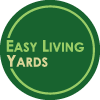
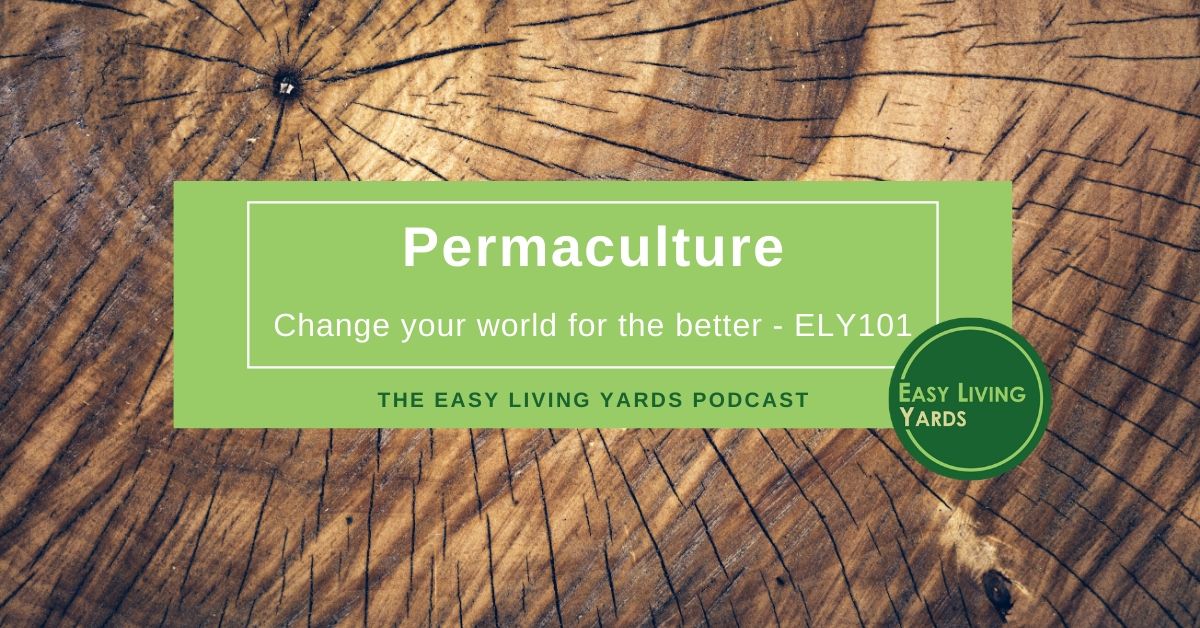
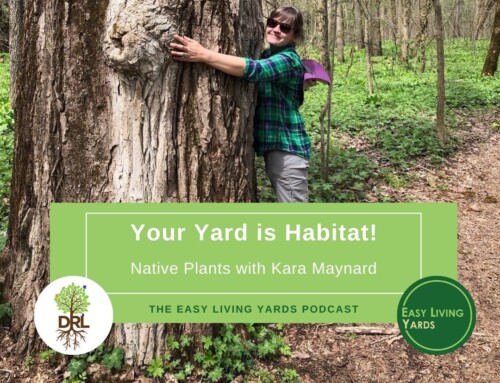

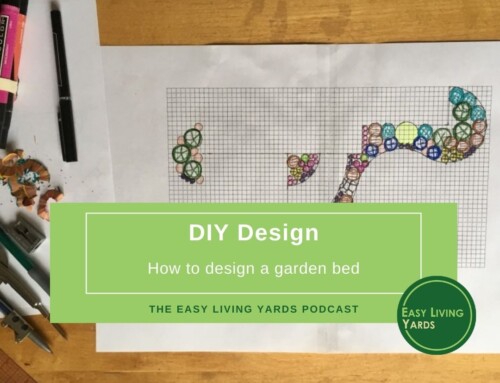

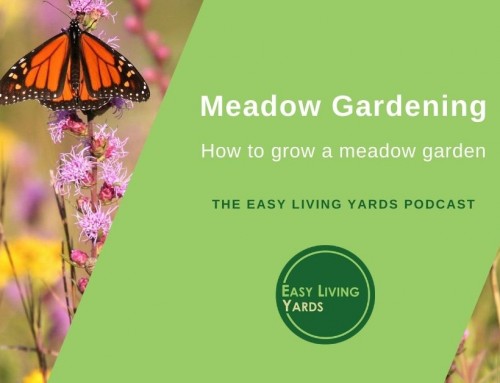
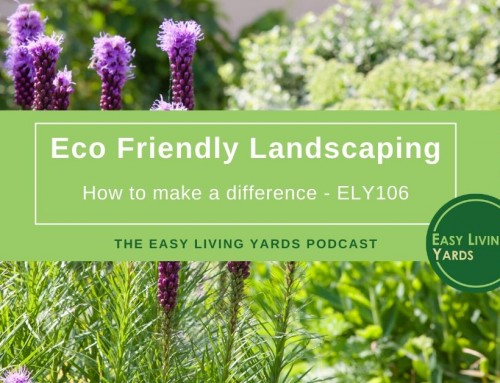
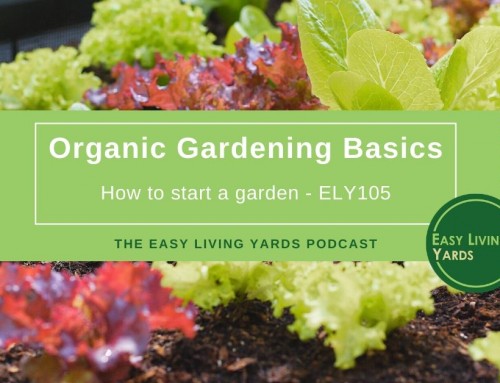
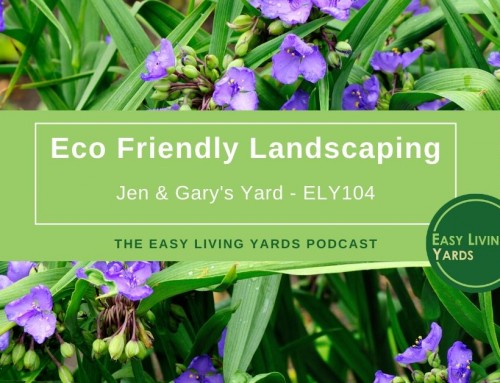
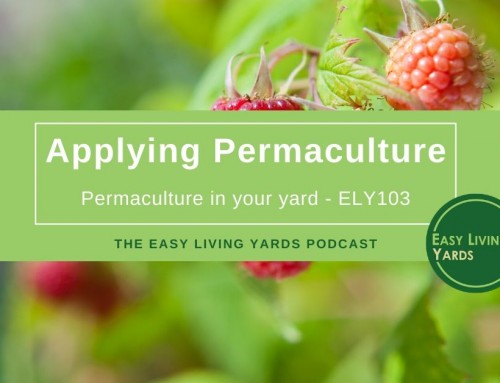
Leave A Comment